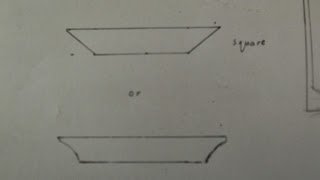Not a new beginning, a continuation...
 With permission input and enthusiasm I am planning a new garden, in a new place. There will be flowers of course, there should always be flowers.
With permission input and enthusiasm I am planning a new garden, in a new place. There will be flowers of course, there should always be flowers. 


 With permission input and enthusiasm I am planning a new garden, in a new place. There will be flowers of course, there should always be flowers.
With permission input and enthusiasm I am planning a new garden, in a new place. There will be flowers of course, there should always be flowers. 


 |
| Yam Daisy, Murnong: Microseris lanceolata |
Country or Region
|
Carolingian
empire
|
||||||
Date
|
9th century
|
between 12th
and 13th C
|
between 12th
and 13th C
|
14th–15th
century a.d
|
1529
|
||
Source
|
Walahfrid
Strabos Hortulus
|
results
of the archaeobotanical investigation of “The Mirror Pit”
|
Libre del Coch
|
||||
Scientific
name
|
|||||||
Melon
|
Cucumis
melo
|
x
|
x
|
x
|
x
|
||
Watermelon
|
Citrillus
lanatus
|
x
|
x
|
 |
| Red Oak |

 |
| Red Oak |
 |
| Wooden C clamp detail . |
 |
Noah's Ark Cycle: 1. Building of the Ark1588 Kaspar Memberger the Elder |


 I also need to decide if the style is appropriate for the house i will end up in, and that it's child safe!
I also need to decide if the style is appropriate for the house i will end up in, and that it's child safe! |
| Taper cutters |
 |
| Pfiel sccorp, 3cm width. |
 I have been watching the series "Vikings" on SBS.Now before I find myself shunned for this, just let me say one thing. GEESE. Yes the cothing is innacurate, the view of government a little skewed and there seem's to be an awful lot of threeway action happening...But, there are geese in just about every episode. I am fairly sure that it's the same flock as well.
I have been watching the series "Vikings" on SBS.Now before I find myself shunned for this, just let me say one thing. GEESE. Yes the cothing is innacurate, the view of government a little skewed and there seem's to be an awful lot of threeway action happening...But, there are geese in just about every episode. I am fairly sure that it's the same flock as well.
 | |
| casket with lid |
 with an outside height of 1.5 units. What is a unit? well basically I measured the images at a certain size on the screen and while those measurements are in centimeters, I can use them to scale up or down the size of the bowl. This has no reflection on the real size of the bowls, sadly this is unknown to me.
with an outside height of 1.5 units. What is a unit? well basically I measured the images at a certain size on the screen and while those measurements are in centimeters, I can use them to scale up or down the size of the bowl. This has no reflection on the real size of the bowls, sadly this is unknown to me. |
| A Woman collecting the leaves of beets. The illustrations are from late 14th Century northern Italian manuscripts published in The Medieval Health Handbook: tacuinum sanitatis (NY: George Braziller, 1976). Image sourced from http://www.buttery.org/marian/14th_c_ital_baskets_2.html |
 |
| A slection of sources which mention varieties of Beta Vulgaris. |